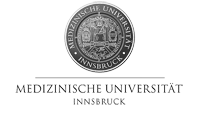|
|
 |
1 Department of Paediatrics, Second Faculty of Medicine, Charles University in Prague, Prague, Czech Republic
2 Department of Paediatrics, Third Faculty of Medicine, Charles University in Prague, Prague, Czech Republic
3 Steno Diabetes Center and Hagedorn Research Institute, Gentofte, Denmark
4 Diabetes Center, Institute for Clinical and Experimental Medicine, Prague, Czech Republic
Aims. The aim of this study was screening for mutations of the NEUROD1 and IPF-1 genes in patients with clinical characteristics of maturity-onset diabetes of the young (MODY) who carried no mutations in the HNF-4alpha (MODY 1), GCK (MODY 2) and TCF1 (MODY 3) genes.
Methods. We studied 30 unrelated probands of Czech origin (14 males, 16 females) with a clinical diagnosis of MODY. The median age of probands was 18 years (interquartile range 17 to 35.5) and the median age at the first recognition of hyperglycaemia was 16 years (interquartile range 14 to 22). The promotor, exons and exon/intron boundaries of the NEUROD1 and IPF-1 genes were examined by PCR-dHPLC followed by direct sequencing.
Results. While no mutations were found in the IPF-1 gene, a novel substitution in the NEUROD1 gene was identified in two unrelated probands. This H241Q substitution is located in the transactivation domain of the protein. The H241 residue is evolutionary remarkably conserved. In the first proband, the H241Q mutation lead to early-onset (20 years) hyperglycaemia followed by serious diabetic microvascular complications by the age of 32 years. The second proband suffers from slowly progressing hyperglycaemia first detected at 30 years. He developed no diabetic complications by his current age of 39 years. We identified several symptomatic as well as pre-symptomatic mutation carriers in both families.
Conclusion. The H241Q variant co-segregated with diabetes mellitus in affected families suggesting that it represents a new disease causing mutation that is responsible for autosomal dominant transmission of diabetes mellitus.
